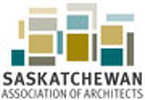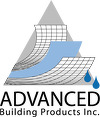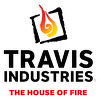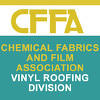
Saskatchewan Association of Architects
The Saskatchewan Association of Architects is a regulatory body which exists to ensure for the public the proficiency and competency of its members, and to promote and increase knowledge related to the practice of architecture in Saskatchewan.
Click to Learn More About the Saskatchewan Association of Architects
Visit www.saskarchitects.com and Join Now!
Displaying 126 - 150 of 619 results.
FIRST PREV [76-100] [101-125] [126-150] [151-175] [176-200] NEXT LASTScan this code with your mobile device camera to take this page on-the-go!

https://redirect.aecdaily.com/s1002402/www.aecdaily.com/course/1036036

 The trend toward more sustainable, healthy, and energy-conserving enclosures has brought building science and moisture management to the forefront of daily conversation for professionals in the construction industry. In this course, we delve into the science behind current practices and explore the role of building envelopes, optimal wall assemblies, and enclosures in vapor, water, air, and thermal control.
The trend toward more sustainable, healthy, and energy-conserving enclosures has brought building science and moisture management to the forefront of daily conversation for professionals in the construction industry. In this course, we delve into the science behind current practices and explore the role of building envelopes, optimal wall assemblies, and enclosures in vapor, water, air, and thermal control.
Scan this code with your mobile device camera to take this page on-the-go!

https://redirect.aecdaily.com/s682008/www.aecdaily.com/course/1028664

 Buildings need protection from cyber as well as physical threats. Building shielding offers several architectural solutions that contribute to the security of both building occupants and wireless systems. These solutions also help reduce unwanted solar heat and glare while providing protection from the elements and people seeking to cause harm. This course presents the security and performance benefits of shielding technology that can improve wireless performance, energy efficiency, and occupant comfort, satisfaction, and safety
Buildings need protection from cyber as well as physical threats. Building shielding offers several architectural solutions that contribute to the security of both building occupants and wireless systems. These solutions also help reduce unwanted solar heat and glare while providing protection from the elements and people seeking to cause harm. This course presents the security and performance benefits of shielding technology that can improve wireless performance, energy efficiency, and occupant comfort, satisfaction, and safety
Scan this code with your mobile device camera to take this page on-the-go!

https://redirect.aecdaily.com/s5023/www.aecdaily.com/course/1009062

 Protected roof membrane assemblies (PRMAs), and vegetative roof assemblies (VRAs) in particular, place extreme requirements on the components below the surface, from waterproofing to insulation and everything in between. Each element must meet specific standards for energy efficiency and durability. This course reviews the benefits and design considerations of VRAs. It also describes the high-performance attributes of VRA components and defines the building code/performance standards and best specification practices for optimal fire, wind, thermal, and moisture performance.
Protected roof membrane assemblies (PRMAs), and vegetative roof assemblies (VRAs) in particular, place extreme requirements on the components below the surface, from waterproofing to insulation and everything in between. Each element must meet specific standards for energy efficiency and durability. This course reviews the benefits and design considerations of VRAs. It also describes the high-performance attributes of VRA components and defines the building code/performance standards and best specification practices for optimal fire, wind, thermal, and moisture performance.
Scan this code with your mobile device camera to take this page on-the-go!

https://redirect.aecdaily.com/s10541/www.aecdaily.com/course/1012800

 Masonry wall types have evolved from self-supporting mass walls to cavity walls and veneers that require wall ties or anchors. Over time, anchors can fail and masonry wall systems can become unstable and require repair. This course discusses how to recognize unstable façades, how retrofit anchors can be used to repair these instabilities, the different types of anchors available, and how to determine the proper repair procedure.
Masonry wall types have evolved from self-supporting mass walls to cavity walls and veneers that require wall ties or anchors. Over time, anchors can fail and masonry wall systems can become unstable and require repair. This course discusses how to recognize unstable façades, how retrofit anchors can be used to repair these instabilities, the different types of anchors available, and how to determine the proper repair procedure.
Scan this code with your mobile device camera to take this page on-the-go!

https://redirect.aecdaily.com/s2356/www.aecdaily.com/course/893368

 An air curtain, also known as an air door, employs a controlled stream of air aimed across an opening to create an air seal. This seal separates different environments while allowing a smooth, unhindered flow of traffic and unobstructed vision through the opening. This course discusses how air curtains work and why they can contribute to occupant comfort, energy efficiency, and indoor air quality when the door is open. It also reviews how air curtains improve whole-building energy efficiency versus conventional methods.
An air curtain, also known as an air door, employs a controlled stream of air aimed across an opening to create an air seal. This seal separates different environments while allowing a smooth, unhindered flow of traffic and unobstructed vision through the opening. This course discusses how air curtains work and why they can contribute to occupant comfort, energy efficiency, and indoor air quality when the door is open. It also reviews how air curtains improve whole-building energy efficiency versus conventional methods.
Scan this code with your mobile device camera to take this page on-the-go!

https://redirect.aecdaily.com/s17282/www.aecdaily.com/course/930425

 Today’s sectional overhead doors are more sophisticated than ever. Options include high-strength glazing for security and insulated steel sections for increased energy efficiency and durability. Code requirements for safety in high wind-load areas, impact resistance to hurricanes, and reductions in air transmission have led to improvements in door technology and hardware. This course examines a range of safety and security options for architects to consider when designing and specifying sectional overhead doors.
Today’s sectional overhead doors are more sophisticated than ever. Options include high-strength glazing for security and insulated steel sections for increased energy efficiency and durability. Code requirements for safety in high wind-load areas, impact resistance to hurricanes, and reductions in air transmission have led to improvements in door technology and hardware. This course examines a range of safety and security options for architects to consider when designing and specifying sectional overhead doors.
Scan this code with your mobile device camera to take this page on-the-go!

https://redirect.aecdaily.com/s13235/www.aecdaily.com/course/949054

 Natural light is important in everyday life, with positive effects on one's health, well-being, and productivity. This course provides an understanding of how automated high-performance shades can provide more natural light. Current market drivers and their effects on a building's value are also discussed. The course explores how to increase visual and thermal comfort by automating the balance of natural and artificial light and outlines the role of high-performance shades in meeting sustainability standards. This course also discusses the influence of automated façades on a building’s performance.
Natural light is important in everyday life, with positive effects on one's health, well-being, and productivity. This course provides an understanding of how automated high-performance shades can provide more natural light. Current market drivers and their effects on a building's value are also discussed. The course explores how to increase visual and thermal comfort by automating the balance of natural and artificial light and outlines the role of high-performance shades in meeting sustainability standards. This course also discusses the influence of automated façades on a building’s performance.
Scan this code with your mobile device camera to take this page on-the-go!

https://redirect.aecdaily.com/s936437/www.aecdaily.com/course/948026

 Thermal modification is a tried and tested process for increasing the durability of wood while maintaining a warm aesthetic in building design. This course examines all aspects of this sustainable wood product and how it can be incorporated into a variety of projects.
Thermal modification is a tried and tested process for increasing the durability of wood while maintaining a warm aesthetic in building design. This course examines all aspects of this sustainable wood product and how it can be incorporated into a variety of projects.
Scan this code with your mobile device camera to take this page on-the-go!

https://redirect.aecdaily.com/s14798/www.aecdaily.com/course/1059306

 When designing noise control measures for a building, it is critical to look beyond the sound transmission class (STC) and impact insulation class (IIC) ratings in order to create an ideal environment that promotes occupant well-being, protects their hearing, and fulfills the project’s needs. This course provides an overview of noise control principles, construction composites, and design methodologies that reduce noise, with an emphasis on performance-oriented designs requiring third-party acoustical consultants.
When designing noise control measures for a building, it is critical to look beyond the sound transmission class (STC) and impact insulation class (IIC) ratings in order to create an ideal environment that promotes occupant well-being, protects their hearing, and fulfills the project’s needs. This course provides an overview of noise control principles, construction composites, and design methodologies that reduce noise, with an emphasis on performance-oriented designs requiring third-party acoustical consultants.
Scan this code with your mobile device camera to take this page on-the-go!

https://redirect.aecdaily.com/s439587/www.aecdaily.com/course/1070287

 The modern wine cellar has been transformed by the design community, bringing storage out of the basement and into main-floor living in both commercial and residential properties. Proper wine storage is equal parts art and science. This course examines the many storage options, focusing on style, construction considerations, and budgeting.
The modern wine cellar has been transformed by the design community, bringing storage out of the basement and into main-floor living in both commercial and residential properties. Proper wine storage is equal parts art and science. This course examines the many storage options, focusing on style, construction considerations, and budgeting.
Scan this code with your mobile device camera to take this page on-the-go!

https://redirect.aecdaily.com/s616041/www.aecdaily.com/course/1048990

 Building owners have come to rely on weatherable coatings to provide long-term protection to their buildings. With an increased focus on sustainability, performance, and durability, PVDF resin-based coatings can help architects and painting contractors exceed their clients’ design goals. This course covers the key components and functions of high-performance weatherable coatings and looks at how these coatings contribute to sustainable design.
Building owners have come to rely on weatherable coatings to provide long-term protection to their buildings. With an increased focus on sustainability, performance, and durability, PVDF resin-based coatings can help architects and painting contractors exceed their clients’ design goals. This course covers the key components and functions of high-performance weatherable coatings and looks at how these coatings contribute to sustainable design.
Scan this code with your mobile device camera to take this page on-the-go!

https://redirect.aecdaily.com/s18901/www.aecdaily.com/course/959803

 Designing a structure that is resilient requires a strong understanding of material and building science. This course discusses the composition, performance, and application of engineered polymer siding and trim and capped polymer cladding to illustrate the benefits to home and building owners when construction materials are selected with resilience and sustainability in mind.
Designing a structure that is resilient requires a strong understanding of material and building science. This course discusses the composition, performance, and application of engineered polymer siding and trim and capped polymer cladding to illustrate the benefits to home and building owners when construction materials are selected with resilience and sustainability in mind.
Scan this code with your mobile device camera to take this page on-the-go!

https://redirect.aecdaily.com/s671/www.aecdaily.com/course/1133984

 Radon is a colorless, odorless gas, a Class A carcinogen, the leading cause of cancer after smoking, and the leading cause of death for nonsmokers. It is found in soil, rock, and groundwater. If radon enters a home through slabs, basements, and crawl spaces, breathing it can lead to illness or even death. This course examines how the gas travels through soil and into structures and the various interception approaches and materials that can be utilized to prevent entry into inhabited spaces. It also highlights building code requirements and language that can assist with ensuring the correct radon interception systems are designed and installed effectively.
Radon is a colorless, odorless gas, a Class A carcinogen, the leading cause of cancer after smoking, and the leading cause of death for nonsmokers. It is found in soil, rock, and groundwater. If radon enters a home through slabs, basements, and crawl spaces, breathing it can lead to illness or even death. This course examines how the gas travels through soil and into structures and the various interception approaches and materials that can be utilized to prevent entry into inhabited spaces. It also highlights building code requirements and language that can assist with ensuring the correct radon interception systems are designed and installed effectively.
Scan this code with your mobile device camera to take this page on-the-go!

https://redirect.aecdaily.com/s8598/www.aecdaily.com/course/1023138

 If a facility experiences an environmental, accidental, or deliberate threat, the safety of the building and its inhabitants is a primary concern. Special-purpose doors and windows can address this concern by providing improved security in various applications. This course discusses the regulations and standards applicable to special-purpose doors and windows, including fire ratings, acoustical ratings, blast and pressure resistance, bullet resistance, and radio frequency shielding.
If a facility experiences an environmental, accidental, or deliberate threat, the safety of the building and its inhabitants is a primary concern. Special-purpose doors and windows can address this concern by providing improved security in various applications. This course discusses the regulations and standards applicable to special-purpose doors and windows, including fire ratings, acoustical ratings, blast and pressure resistance, bullet resistance, and radio frequency shielding.
Scan this code with your mobile device camera to take this page on-the-go!

https://redirect.aecdaily.com/s424571/www.aecdaily.com/course/1000126

 For the typical homeowner, choosing exterior color can be a daunting task; however, there is guidance available to help choose color palettes that complement the exterior of the home. This course presents the FRESH approach: a strategic method used for the selection of colors for the exterior of buildings. The course focuses on both residential and commercial design considerations and details the steps to follow in the color selection process to achieve a harmonious design.
For the typical homeowner, choosing exterior color can be a daunting task; however, there is guidance available to help choose color palettes that complement the exterior of the home. This course presents the FRESH approach: a strategic method used for the selection of colors for the exterior of buildings. The course focuses on both residential and commercial design considerations and details the steps to follow in the color selection process to achieve a harmonious design.
Scan this code with your mobile device camera to take this page on-the-go!

https://redirect.aecdaily.com/s13250/www.aecdaily.com/course/623569

 When the asphalt fumes, open flame, and kettles that accompany hot-applied roofing are not permissible, cold-applied roofing is an option. There are a variety of types of cold-applied roofing that offer easy portability of materials to the roof, smaller roofing crews, ease of application, and a low-VOC option. In this course, we focus on the adhesive application of modified bitumen membranes using bituminous cold-process adhesives, the adhesive types, their components and characteristics, application methods, and design and use considerations.
When the asphalt fumes, open flame, and kettles that accompany hot-applied roofing are not permissible, cold-applied roofing is an option. There are a variety of types of cold-applied roofing that offer easy portability of materials to the roof, smaller roofing crews, ease of application, and a low-VOC option. In this course, we focus on the adhesive application of modified bitumen membranes using bituminous cold-process adhesives, the adhesive types, their components and characteristics, application methods, and design and use considerations.
Scan this code with your mobile device camera to take this page on-the-go!

https://redirect.aecdaily.com/s18122/www.aecdaily.com/course/1027351

 Energy creation, distribution, and consumption are all in a period of transition. Understanding this transition and its various aspects is critical to sustainable transitional energy planning (STEP). This course delves into the reasoning behind the STEP approach and its contributions to creating resilient communities and explores available exhaustible and renewable energy resources and innovations in the energy sector that can be leveraged by STEP.
Energy creation, distribution, and consumption are all in a period of transition. Understanding this transition and its various aspects is critical to sustainable transitional energy planning (STEP). This course delves into the reasoning behind the STEP approach and its contributions to creating resilient communities and explores available exhaustible and renewable energy resources and innovations in the energy sector that can be leveraged by STEP.
Scan this code with your mobile device camera to take this page on-the-go!

https://redirect.aecdaily.com/s18795/www.aecdaily.com/course/787410

 A sound building envelope should be sustainable and provide fire resistance, good thermal performance, and protection from the elements. Mineral wool, fire rated insulated metal panels (IMPs) can improve building performance and contribute to a sustainable design strategy. Included in this course are discussions on mineral wool IMP characteristics and design options, performance advantages, and installation considerations. The course details how fire resistance is specified in the International Building Code and provides examples of fire wall and fire partition construction assemblies.
A sound building envelope should be sustainable and provide fire resistance, good thermal performance, and protection from the elements. Mineral wool, fire rated insulated metal panels (IMPs) can improve building performance and contribute to a sustainable design strategy. Included in this course are discussions on mineral wool IMP characteristics and design options, performance advantages, and installation considerations. The course details how fire resistance is specified in the International Building Code and provides examples of fire wall and fire partition construction assemblies.
Scan this code with your mobile device camera to take this page on-the-go!

https://redirect.aecdaily.com/s14532/www.aecdaily.com/course/1138134

 Traditional and modern, linear direct vent gas fireplaces safely provide supplemental heat while preserving indoor air quality. The course explores gas fireplace venting systems and heater- and decorative-rated fireplace options, electric fireplace options, functions, aesthetics, and applications. Also discussed are innovative technologies that enhance performance, applicable codes and standards, safety requirements and precautions, and size considerations.
Traditional and modern, linear direct vent gas fireplaces safely provide supplemental heat while preserving indoor air quality. The course explores gas fireplace venting systems and heater- and decorative-rated fireplace options, electric fireplace options, functions, aesthetics, and applications. Also discussed are innovative technologies that enhance performance, applicable codes and standards, safety requirements and precautions, and size considerations.
Scan this code with your mobile device camera to take this page on-the-go!

https://redirect.aecdaily.com/s390008/www.aecdaily.com/course/929738

 White roofs made of PVC (vinyl) can reflect three-quarters or more of the sun's rays and emit 70% or more of the solar radiation absorbed by the building envelope. Despite protecting and keeping buildings cool in all climates around the world for decades, misconceptions about the energy impact of cool roofs still exist. This course uses the fundamental science behind cool roofs to address alleged issues concerning the performance of cool roof products.
White roofs made of PVC (vinyl) can reflect three-quarters or more of the sun's rays and emit 70% or more of the solar radiation absorbed by the building envelope. Despite protecting and keeping buildings cool in all climates around the world for decades, misconceptions about the energy impact of cool roofs still exist. This course uses the fundamental science behind cool roofs to address alleged issues concerning the performance of cool roof products.
Scan this code with your mobile device camera to take this page on-the-go!

https://redirect.aecdaily.com/s783922/www.aecdaily.com/course/1055654

 Installing snow retention systems on rooftop applications improves the safety of building occupants and can decrease the risk of property damage. This course identifies different snow guard styles and explains how each contributes to snow retention. Installation techniques are reviewed, and layout designs that maximize occupant safety and minimize hazards are also discussed.
Installing snow retention systems on rooftop applications improves the safety of building occupants and can decrease the risk of property damage. This course identifies different snow guard styles and explains how each contributes to snow retention. Installation techniques are reviewed, and layout designs that maximize occupant safety and minimize hazards are also discussed.
Scan this code with your mobile device camera to take this page on-the-go!

https://redirect.aecdaily.com/s4937/www.aecdaily.com/course/1136674

 The demand for mass timber construction has increased significantly in recent years due to its numerous benefits, including sustainability, strength, faster construction times, cost savings, and a natural wood aesthetic. However, a major drawback of mass timber construction is its poor acoustical performance. This course examines the various mass timber construction types and provides acoustical solutions to meet and surpass building codes.
The demand for mass timber construction has increased significantly in recent years due to its numerous benefits, including sustainability, strength, faster construction times, cost savings, and a natural wood aesthetic. However, a major drawback of mass timber construction is its poor acoustical performance. This course examines the various mass timber construction types and provides acoustical solutions to meet and surpass building codes.
Scan this code with your mobile device camera to take this page on-the-go!

https://redirect.aecdaily.com/s12474/www.aecdaily.com/course/967494

 In food and beverage, food processing/distribution, and cold storage facilities, it is important to use doors that can provide speed, safety, separation, and security. High-speed, high-cycle, roll-up doors provide all these elements better than conventional doors. This course provides an in-depth discussion of the different types of high-performance doors—fabric, rigid, and rubber—along with their benefits and functions in different applications. The specification criteria, design, and installation considerations for high-performance doors are also discussed.
In food and beverage, food processing/distribution, and cold storage facilities, it is important to use doors that can provide speed, safety, separation, and security. High-speed, high-cycle, roll-up doors provide all these elements better than conventional doors. This course provides an in-depth discussion of the different types of high-performance doors—fabric, rigid, and rubber—along with their benefits and functions in different applications. The specification criteria, design, and installation considerations for high-performance doors are also discussed.
Scan this code with your mobile device camera to take this page on-the-go!

https://redirect.aecdaily.com/s5147/www.aecdaily.com/course/853451

 Roofing technologies have come a long way from labor-intensive BUR systems that achieved watertightness through redundancy. Today’s single-ply membranes are thin, light and reliable, and installation is safe and efficient. This course focuses on thermoplastic single-plies, particularly those that are PVC based, and explores their benefits and limitations as well as the important factors to consider when selecting a roof system, ranging from fastening techniques to warranties to sustainability.
Roofing technologies have come a long way from labor-intensive BUR systems that achieved watertightness through redundancy. Today’s single-ply membranes are thin, light and reliable, and installation is safe and efficient. This course focuses on thermoplastic single-plies, particularly those that are PVC based, and explores their benefits and limitations as well as the important factors to consider when selecting a roof system, ranging from fastening techniques to warranties to sustainability.
Scan this code with your mobile device camera to take this page on-the-go!

https://redirect.aecdaily.com/s4459/www.aecdaily.com/course/920201

 This course provides an overview of growth trends in package delivery and information necessary to recommend and specify package management solutions for businesses, universities, multifamily residential, and single-family residential homeowners. In addition, this course summarizes the different types of package management equipment, recommended applications, detailed information on current equipment standards, and accessibility considerations used to improve package management and user convenience.
This course provides an overview of growth trends in package delivery and information necessary to recommend and specify package management solutions for businesses, universities, multifamily residential, and single-family residential homeowners. In addition, this course summarizes the different types of package management equipment, recommended applications, detailed information on current equipment standards, and accessibility considerations used to improve package management and user convenience.